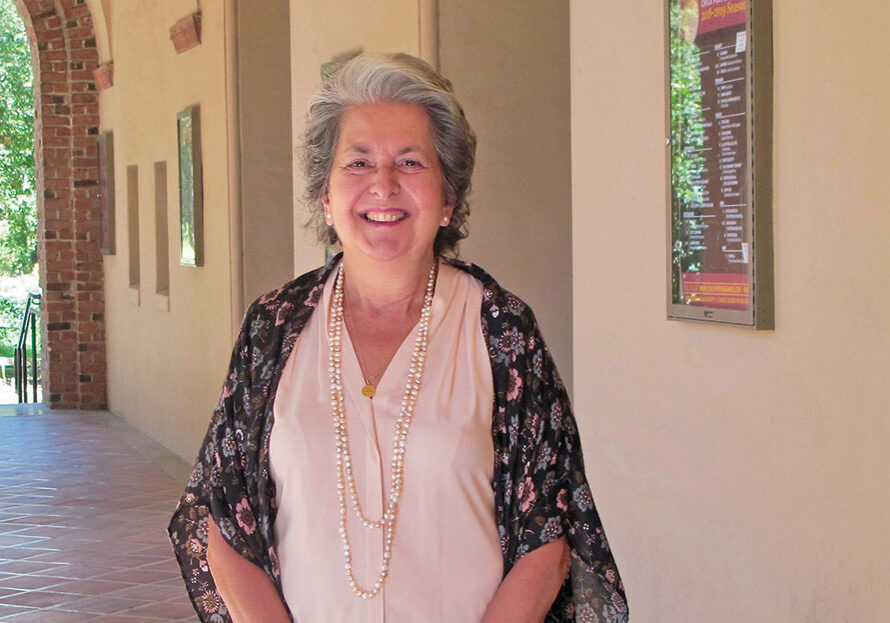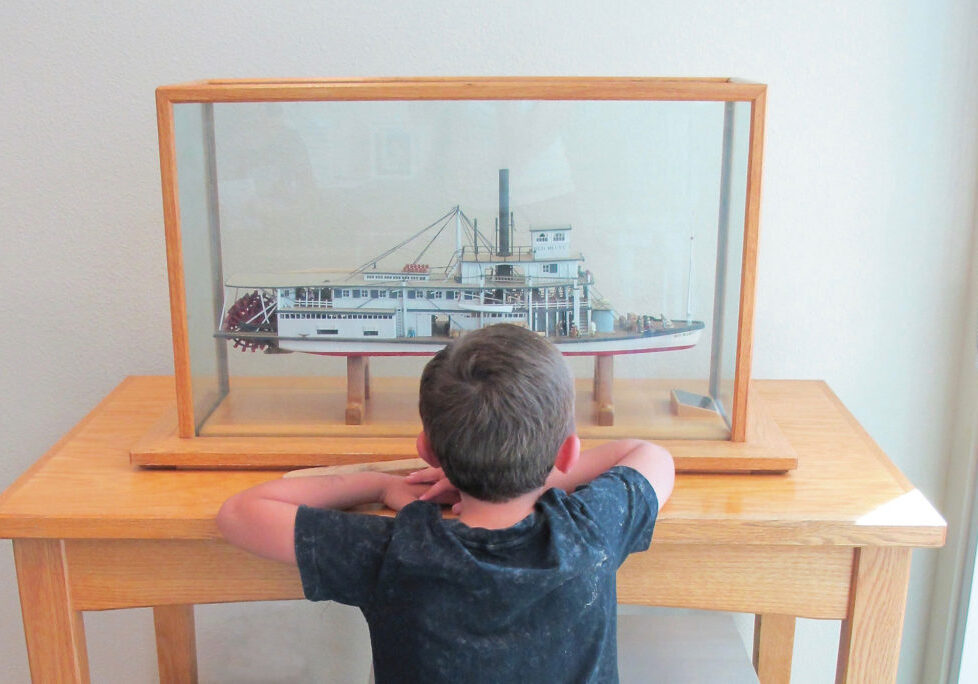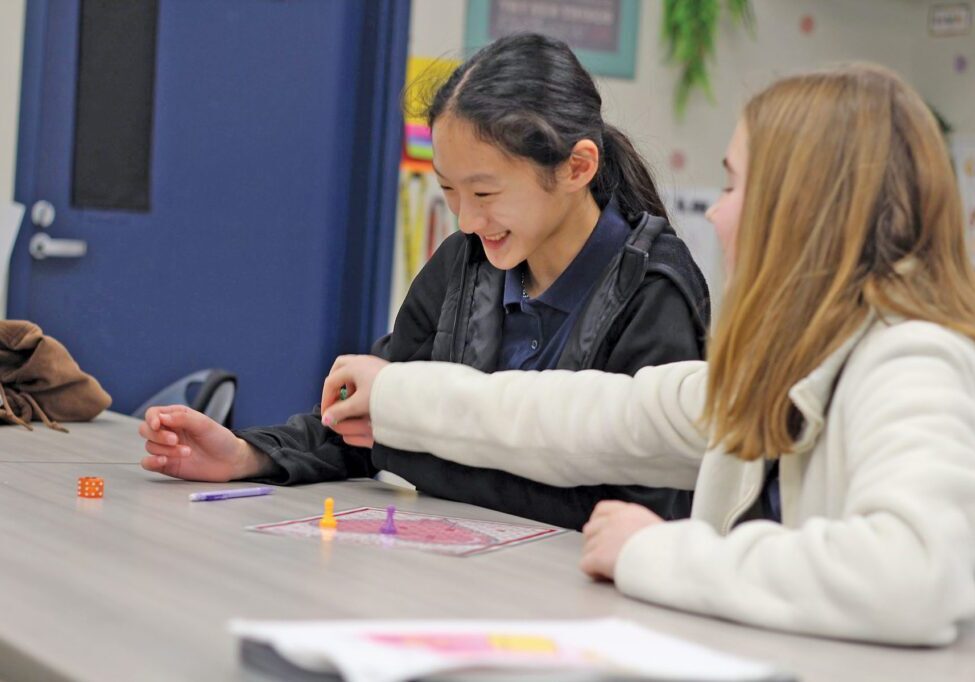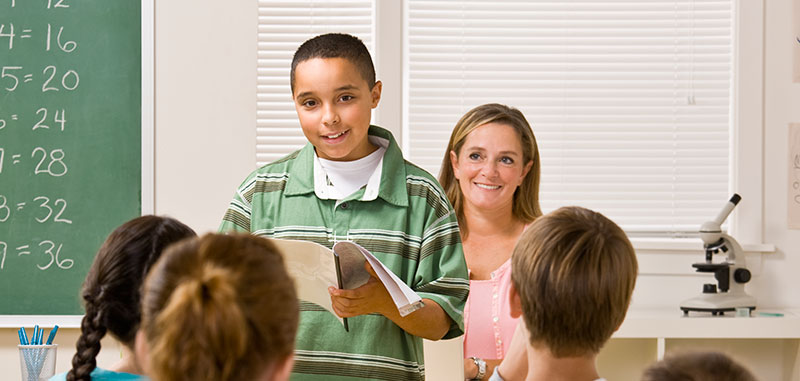“Speak up! I can’t hear you!” repeatedly boomed my seventh-grade life science teacher from the back of the room. The words I’d practiced at home clung to the back of my throat and only agreed to tumble out in mutters. Standing frozen in front of my staring peers, I wanted to dissolve into the floor.
Seventy-five percent of people suffer from public speaking anxiety, leading to sleepless nights before presentations and missed opportunities through avoiding public speaking situations. While organizations like Toastmasters help adults conquer their fears, beginning as early as the preschool years, you can help your youngster nurture the confidence to express himself without fear.
“Public speaking is a skill that is rarely taught, but is so valuable in the adult world,” says Katherine Pebley O’Neal, a fifth-grade teacher and author of the children’s book Public Speaking: 7 Steps to Writing and Delivering a Great Speech. “If we teach our young students how to engage an audience with confidence, they can use the skills to enhance and benefit any profession they choose.”
Flutters of fear.
Why is public speaking scary? “It’s a fear of failure,” says Sarah L. Cook, co-author of The Parents’ Guide to Raising CEO Kids. “It’s a fear of public rejection: Are people going to laugh at me? Are they going to boo me? Are they going to ignore me?”
As peers become more important, fear of the spotlight can grow. Public speaking anxiety can cramp a child’s self-esteem and confidence. Physical signs of limelight-related stress include uncontrollable shaking, hyperventilating, sweating and flushed face, along with short-term memory loss.
Spread steady wings.
Children who learn to communicate effectively exude confidence, and are more likely to enjoy positive relationships and take on leadership roles. And, in today’s high-tech environment, kids will need to hone communication skills across different mediums.
“Things are changing in our educational paradigm where it’s not just ‘go to school and get a job’,” Cook says. “Kids need to have some entrepreneurial skills to even land a job. They need to be able to engage with people confidently. Public speaking allows them to show that confidence.”
More employers now conduct video interviews or ask job candidates to turn in video introductions. Despite our society’s growing reliance on text-talk, our kids must still learn how to speak on the phone effectively, present in front of a group, participate in video conferencing, and communicate professionally to audiences across social media.
How to Turn tummy-tumbling jitters into engaging energy.
Use technology.
A child’s first and friendliest audiences include her family and friends. Inviting her to talk on the phone or webcam to relatives can ease even a shy child’s initial communication inhibitions. Ask your kids questions using a video camera or camcorder – this strategy helps kids get comfortable in front of a camera.
Open the floor at mealtime.
Suggest each member of your family take turns reciting a joke, story, prayer or poem during dinner. Listen carefully to your kids and acknowledge their efforts. When a young child feels listened to, his confidence in expressing himself blossoms.
Encourage show-and-tell.
Most kids love to take something they find meaningful and share it with their friends. Show-and-tell is an excellent introduction to public speaking in a friendly group setting.
Seek out organized opportunities.
Depending on his interests, enroll your child in activities like drama, scouting, science fairs or 4-H. These activities offer leadership roles in a supportive environment that require participants to get in front of an audience.
Practice, practice, practice.
Preparation and practice is necessary to succeed. By writing out what they’d like to say ahead of time and creating visual aids, kids can learn to organize their thoughts. “And if they can present their information with pizzazz, the entire class will actually learn something from their efforts,” O’Neal says. Your child will have more fun presenting if his audience is engaged, too.
Encourage your child to practice his presentation ahead of time, whether in front of a mirror, family members, or a video camera. “Parents can boost confidence by listening to their child practice his or her speech many times. They can remind their child to make eye contact and to smile,” O’Neal says. “The final two or three run-throughs before the performance should be met with only praise.”
A true phobia?
Nervousness before a presentation is normal, but if your child is paralyzed with fear, skipping classes, and avoiding extracurricular activities that require public speaking, consult with a child psychologist. Cognitive behavioral techniques like challenging negative thinking; breathing and relaxation exercises; and supportive coaching can help.
[sws_green_box box_size=”585″]Some Toastmasters clubs allow children to take part with their parents. Toastmasters is an international, nonprofit organization that teaches public speaking and leaderships skills. The organization also offers a youth leadership conference for teens.
What is glossophobia?
It’s a subset of social phobia in which the person suffers a debilitating fear of speaking in public, even if he can perform in front of an audience with no problem.
Celebrities who suffer from public speaking anxiety include Barbra Streisand, Reese Witherspoon and Hugh Grant. [/sws_green_box]
Comment Policy: All viewpoints are welcome, but comments should remain relevant. Personal attacks, profanity, and aggressive behavior are not allowed. No spam, advertising, or promoting of products/services. Please, only use your real name and limit the amount of links submitted in your comment.
You Might Also Like...

Bilingual Education in the North State – Esther Larocco
Dr. Esther Larocco moved to the United States from Cuba when she was 11 years old. Her journey to becoming fluent in English while maintaining her native Spanish sparked Esther’s […]

Wild Things at Your Child’s School
A nonprofit animal rescue Your classmates may have been wild, but if you grew up in the North State, you probably made it through your entire academic career without so […]

Paragliding Papa Takes To The Sky
Siskiyou County Dad Takes To The Sky And Becomes A Better Parent For some kids, the name “Dad” connotes a hero who can do anything but fly. However, for Elliot, […]

The Power of Awe: Why Our Children Need More Awe and How To Give It To Them
Maybe you just spotted a rainbow, watched a video about our expansive universe, or witnessed the birth of your child. The emotion you feel is hard to grasp—an overwhelming mix […]

Three Schools, Three Curricula, One Goal: Empowering Children Through Language Immersion and Enrichment
Research supports learning a second language very early in childhood for long term proficiency. Strong social connections, greater cultural awareness and better overall academic performance, especially in reading, are commonly […]



